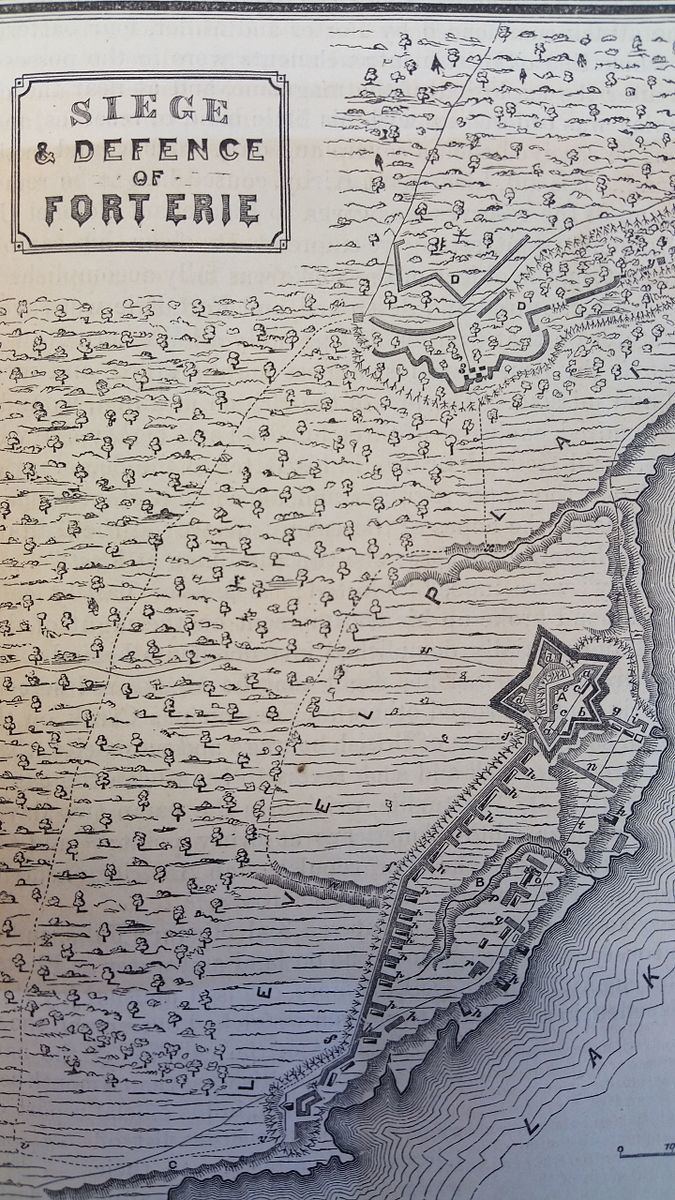137 4,500 Date 3 July 1814 | All surrendered Less than 10 Result American victory | |
 | ||
Combatants United States of America, United Kingdom Similar Battle of Lacolle Mills, Sinking of HMS Reindeer, Siege of Fort Mackinac, Skirmish at Farnham Church, Capture of HMS Penguin | ||
Capture of fort erie
The Capture of Fort Erie by American forces in 1814 was an incident in the War of 1812 between the United Kingdom and the United States. The British garrison was outnumbered but surrendered prematurely, in the view of British commanders.
Contents
Background
The United States shared a long border with British North America (present-day Canada) in 1814. During the war, the Americans launched several invasions into Upper Canada (present-day Ontario). One section of the border where this was easiest (because of communications and locally available supplies) was along the Niagara River. Fort Erie was the British post at the head of the river, near its source in Lake Erie.
In 1812, two American attempts to capture Fort Erie were bungled by Brigadier General Alexander Smyth. Bad weather or poor administration foiled the American efforts to cross the river.
In 1813, the Americans won the Battle of Fort George at the northern end of the Niagara River. The British abandoned the Niagara frontier and allowed Fort Erie to fall into American hands without a fight. The Americans failed to follow up their victory, and later in the year they withdrew most of their soldiers from the Niagara to furnish an ill-fated attack on Montreal. This allowed the British to recover their positions and to mount raids which led to the Capture of Fort Niagara and the devastation of large parts of the American side of the Niagara River.
Battle
For 1814, a new invasion of Upper Canada was planned under the command of Major General Jacob Brown. Originally aimed at Kingston on Lake Ontario, it was switched to the Niagara because British ships controlled Lake Ontario for the first six months of 1814.
Because American troops were already concentrated at Buffalo and Black Rock, the attack was to be launched across the southern part of the Niagara frontier. Fort Erie was the first objective that stood in the way, which required its capture. Lieutenant General Gordon Drummond, the British commander in Upper Canada, hoped that the garrison at Fort Erie could at least buy him enough time against the American invasion to concentrate his forces. Major Thomas Buck was given command of the fort with a garrison of 137 British soldiers.
Brown's force crossed into Canada on July 3. Brigadier General Winfield Scott landed a mile and a half (3 km) north of the fort with a brigade of regulars while it was still dark. Another brigade under Eleazar Wheelock Ripley crossed the head of the river to the south of the fort, although they were delayed by fog. Meanwhile, New York militia demonstrated opposite Chippawa to distract the British troops in the area.
As Scott's and Ripley's forces approached Fort Erie, Buck fired only a few shots at the Americans from the fort's cannon and then surrendered. The Americans had captured an important fort at little cost. The fort's garrison had bought the British little time and Buck was later court martialled for his hasty surrender.
Aftermath
From their new base at Fort Erie, Brown next marched up the Niagara River and met the British at the Battle of Chippawa. The British commander at Chippawa, Major General Phineas Riall, believed that the garrison of Fort Erie was still holding out, which contributed to his decision to launch a hasty and ill-fated attack.
Following the Battle of Lundy's Lane in July, British forces under the command of Gordon Drummond advanced and unsuccessfully besieged the fort. However, American commanders decided to abandon the fort, which was evacuated and blown up in November 1814.
